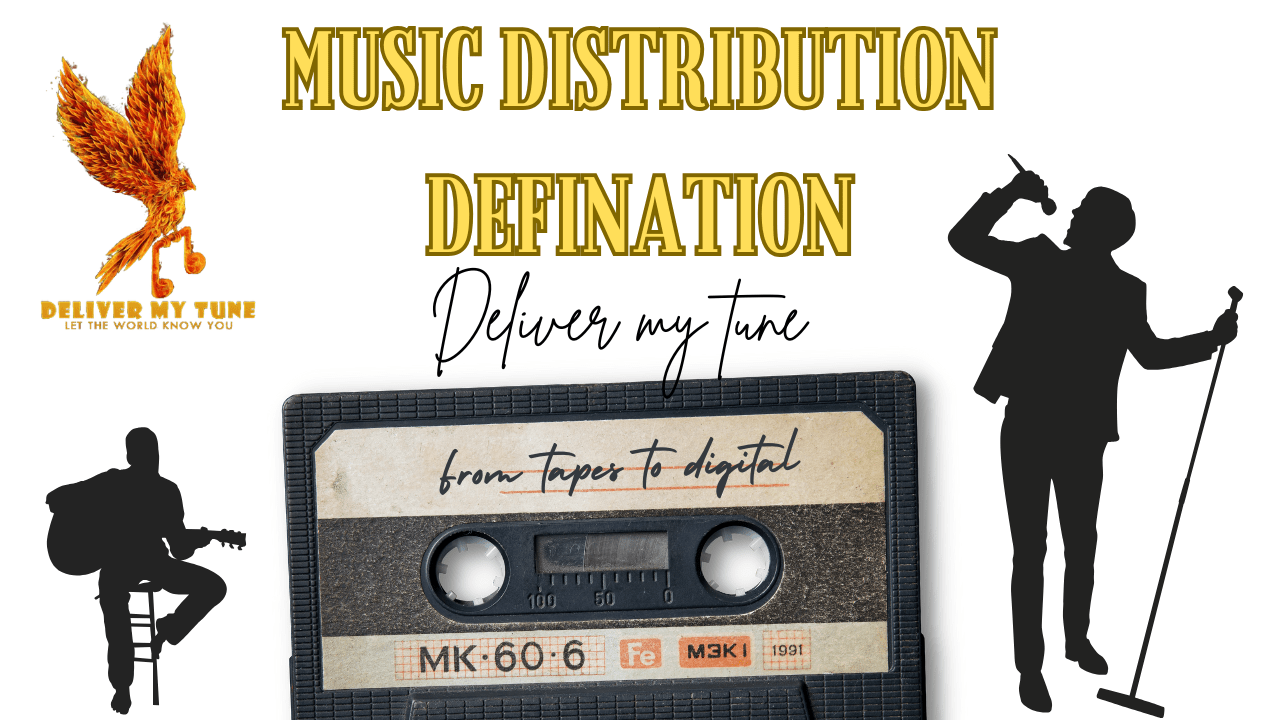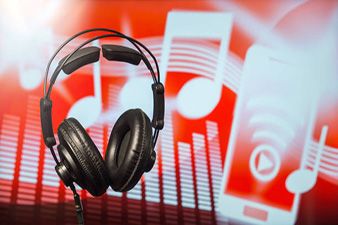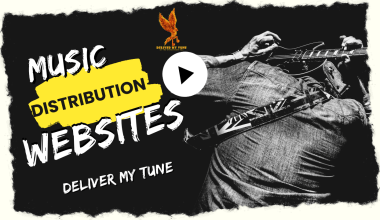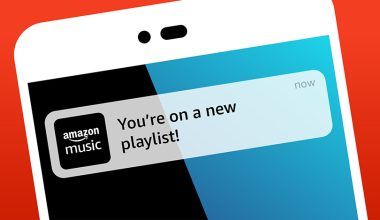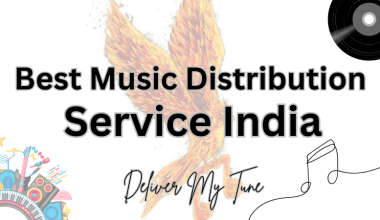Music distribution is the process of delivering music from the creator to the listener. It ensures that an artist’s work is accessible on various platforms, such as streaming services like Spotify and Apple Music, or physical outlets like record stores. This system bridges the gap between artists and audiences, making music available globally.
For independent artists, music distribution is more than just logistics; it’s a pathway to reach a larger audience, earn revenue, and establish a brand in the competitive music industry. In this guide, we’ll explore the definition of music distribution, its evolution, and its importance in 2024, while offering tips for leveraging it effectively.
The Evolution of Music Distribution
Traditionally, music distribution was dominated by record labels. These labels controlled everything: recording, manufacturing, distribution, and promotion. They shipped physical copies (vinyl, cassettes, and CDs) to retail stores. The success of an album or single often depended on radio play and physical sales.
The digital era brought monumental change. With the advent of iTunes in the early 2000s, music sales shifted online, and digital downloads replaced physical albums. The next big evolution was the rise of streaming platforms like Spotify, which now accounts for the majority of global music consumption.
Today, artists no longer need a record label to distribute music. Platforms like DistroKid, TuneCore, and Deliver My Tune empower independent artists to share their work globally.
What Is Music Distribution?
At its simplest, music distribution involves making music available on platforms where listeners can find it. This includes:
- Digital distribution: Streaming services (Spotify, YouTube Music, Apple Music).
- Physical distribution: CDs, vinyl, and other tangible media.
- Social media integration: Platforms like Instagram and TikTok for short music clips.
Music distribution is critical because it determines how and where your audience can access your songs. Whether you’re an emerging artist or an established musician, having a clear music distribution strategy is vital for success.
Types of Music Distribution
1. Physical Distribution
Although physical formats like CDs and vinyl have seen a decline, they remain popular among collectors and audiophiles. Physical distribution is essential for live shows and niche markets.
2. Digital Distribution
Digital distribution has revolutionized the music industry. It allows artists to upload their tracks to platforms like Spotify, Deezer, Amazon Music, and Tidal, reaching a global audience in seconds.
Key aspects of digital distribution include:
- Streaming royalties: Platforms pay artists based on streams.
- Metadata management: Accurate data ensures discoverability.
- Promotion: Many distributors provide playlist pitching and marketing tools.
3. Direct-to-Fan Distribution
Artists can sell music directly to fans via platforms like Bandcamp. This method eliminates intermediaries, ensuring artists keep a larger share of revenue.
Why Is Music Distribution Important?
Music distribution plays a pivotal role in an artist’s career. Here’s why:
- Global Accessibility
With the right distribution, your music can reach listeners across continents. Streaming platforms like Spotify and YouTube Music have millions of active users daily, offering vast exposure. - Revenue Generation
Distribution platforms manage royalties from streams, downloads, and physical sales, ensuring artists get paid for their work. - Building a Brand
Consistent availability across platforms helps solidify an artist’s presence, making it easier for fans to follow their journey. - Analytics and Insights
Modern distribution platforms provide detailed listener analytics, helping artists understand their audience and refine their strategies.
The Music Distribution Process
To effectively distribute your music, follow these key steps:
Step 1: Select a Distributor
Choosing the right distributor is crucial. Popular options include:
- TuneCore: Offers a flat fee for distribution services.
- DistroKid: Affordable plans for unlimited song uploads.
- Deliver My Tune: Provides features like AI mastering and playlist pitching.
Step 2: Prepare Your Music and Metadata
Ensure your tracks are high quality and properly mastered. Metadata, such as song titles, artist names, and genres, must be accurate for better discoverability.
Step 3: Upload and Release
Upload your music to the distributor’s platform. Once approved, the distributor delivers your music to streaming platforms and stores.
Step 4: Monitor and Promote
Track your music’s performance using analytics tools. Promote your releases on social media and leverage playlist pitching for greater reach.
Top Music Distribution Platforms
1. Spotify for Artists
Spotify offers features like Countdown Pages to generate pre-release excitement. Artists can track stats like pre-saves and impressions to measure success.
2. Apple Music
Apple Music emphasizes high-quality audio and accurate metadata. Following its style guide improves your chances of being featured in playlists.
3. Bandcamp
A platform for direct-to-fan sales, Bandcamp allows artists to keep a larger share of their earnings.
4. Deliver My Tune
Known for its artist-friendly policies, Deliver My Tune includes playlist pitching, AI mastering, and customizable label options.
The Role of Playlists in Music Distribution
Playlists are the new radio. Getting your song featured on popular playlists can significantly increase streams and visibility. Distributors often pitch songs to curators, ensuring they reach the right audience.
- Editorial Playlists: Curated by platforms like Spotify and Apple Music.
- Algorithmic Playlists: Personalized playlists like Spotify’s Discover Weekly.
- User-Curated Playlists: Created by listeners and influencers.
Challenges in Music Distribution
- High Competition
With millions of songs released daily, standing out is a challenge. - Royalty Complexity
Understanding royalty structures across platforms can be daunting. - Metadata Errors
Inaccurate metadata can lead to missed opportunities for discovery. - Limited Resources for Independent Artists
Without label support, independent artists must handle marketing, promotion, and distribution on their own.
Future Trends in Music Distribution
- Blockchain Technology
Blockchain is poised to make royalty payments more transparent and efficient. - AI Integration
AI tools are being used for mastering, playlist recommendations, and even creating promotional content. - Short-Form Video Platforms
Apps like TikTok and Instagram Reels are becoming essential distribution channels, allowing artists to reach younger audiences through viral content. - Localized Strategies
Platforms are focusing on regional languages and local artists, opening up new markets.
Tips for Successful Music Distribution
- Leverage Social Media
Promote your releases on Instagram, TikTok, and YouTube using creative campaigns. - Collaborate
Collaborations with other artists can increase exposure and cross-promote audiences. - Understand Your Audience
Use analytics tools to identify trends in listener behavior. - Release Consistently
Frequent releases keep your audience engaged and help you stay relevant.
Frequently Asked Questions
Q: What is the difference between a music distributor and a record label?
A: A music distributor focuses solely on delivering music to platforms and retailers, while a record label provides additional services like marketing and artist management.
Q: How do streaming royalties work?
A: Streaming platforms pay artists based on the number of streams. The payout per stream varies depending on the platform and listener location.
Q: Is physical distribution still relevant?
A: Yes, especially for niche markets like vinyl collectors and live concert merchandise.
Conclusion
The definition of music distribution extends far beyond just delivering songs to platforms. It’s an essential tool for artists to reach audiences, earn revenue, and build a sustainable career in the music industry. Whether you’re an independent artist or signed to a label, understanding and leveraging the power of distribution can unlock immense opportunities in the digital age.
By embracing modern trends and focusing on consistent promotion, artists can maximize the benefits of music distribution and leave a lasting impact on the global stage.
Related Articles:
For further reading, explore these related articles:
- 10 Things Artists Can Learn From Entrepreneurs
- Your Musician Guide for Podcasting
- Music Skills to Develop While Stuck at Home
For additional resources on music marketing and distribution, visit Deliver My Tune.
